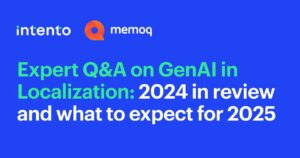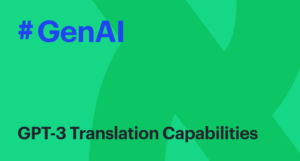This blog post highlights key takeaways from our discussion with Carrie Fischer (Subway), John Weisgerber (XTM International), and Vann Maxson (Intento), who shared how global enterprises can effectively implement AI in localization workflows. Subway’s journey provides actionable tips for organizations looking to balance quality, cost, and efficiency.
Tip #1: Define success beyond cost savings
At Subway, Carrie measures translation success through multiple dimensions. She primarily uses machine translation to handle large volumes of content efficiently. With this approach, Carrie achieves at least 25% cost savings on every machine translation with post-editing (MTPE) project while significantly reducing delivery times. Working as a one-person localization team, she finds that centralizing everything in a single system is essential for managing her workflow effectively.
John Weisgerber from XTM International emphasizes that ROI metrics must be tailored to specific content types. Companies cannot accurately measure their ROI without clearly defined success criteria for each content category.
Tip #2: Select content where AI delivers the most value
Through years of implementation, Subway has identified which content types benefit most from machine translation:
- High ROI content: Operations manuals, technical documentation, and legal contracts work well with MT
- Traditional human translation: Customer-facing content requiring brand voice consistency
- Knowledge distribution: E-learning materials and knowledge bases for global franchises
Carrie notes that successful MT content is typically straightforward rather than creative. For marketing messages promoting new products, Subway still relies on more traditional translation approaches.
Tip #3: Navigate enterprise security and policy hurdles
Implementing AI translation technology in large enterprise environments involves complex approval processes. Subway’s experience highlights two key challenges:
- Security clearance: The process requires thorough reviews and explanations to security teams on how the technology benefits the organization.
- Policy development: Subway developed their first formal AI policy in 2024, prompted by Carrie’s exploration of automated post-editing.
Enterprises should also prepare for change management by helping teams across the organization understand what AI can and cannot do.
Tip #4: Prepare for expansion, not reduction
Several key practices enterprises should consider when implementing AI translation:
- Starting with small pilots for suitable content
- Establishing clear metrics for each content type
- Consistent testing and measurement
- Centralizing management through their TMS
- Maintaining flexibility as AI evolves
John pointed out that successful AI implementation typically leads to translating more content rather than reducing workload. Organizations often reinvest savings to expand into additional markets.
Tip #5: Continuously test and reassess AI technologies
The AI advancements demand ongoing evaluation.
When testing automated post-editing two years ago, Carrie revealed varying performance levels between languages. German (a widely spoken European language with more online content) performed mediocre, while Polish (which typically has less training data available) performed poorly. Carrie guessed that more commonly translated languages like Spanish or French might have yielded better results. This highlights the importance of language selection when implementing AI translation and why continuous retesting is valuable as AI models rapidly evolve.
Still, the ongoing challenge is finding the right balance between innovation and risk management.
Three emerging capabilities show particular promise for enterprise localization:
- AI agents performing specific tasks without constant supervision
- Machine handling of creative content that traditionally required human translation
- Improved performance for languages with fewer digital resources
Subway’s experience shows that maximizing ROI with AI translation requires thoughtful content selection, clear success metrics, and systematic implementation. By following this roadmap, enterprises can achieve significant time and cost savings while maintaining the quality standards their business requires.
You can watch the full discussion here.



